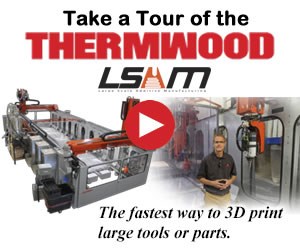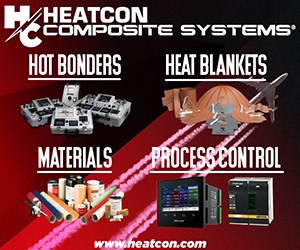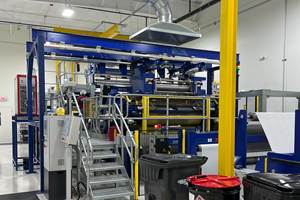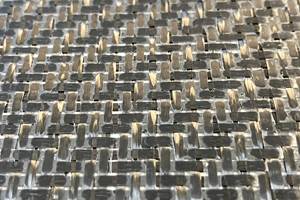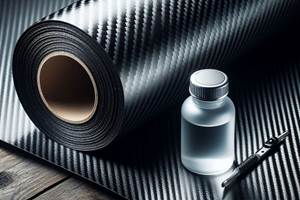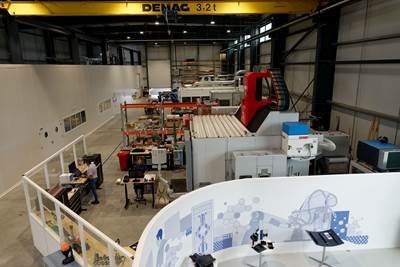Thermwood successfully tests composite thermoplastic print head on LSAM
At a print rate of 500 lbs/hr, the company says its newest and largest print head, the PH50, is more than three times faster than its current PH15 print head.
After recently announcing its line of LSAM (large scale additive manufacturing) machines, Thermwood Corp. (Dale, Ind.) has now built and tested a high output version of its PH Series composite thermoplastic 3D print head. Thermwood has been operating the PH15 print head on the development version of its LSAM. The PH15 features a maximum print output rate of 150 lbs/hr when running a 20% carbon fiber filled ABS material. The company’s newest, and largest print head, the PH50, has been successfully bench-tested at a print rate of slightly over 500 lbs/hr running the same material.
Thermwood’s PH Series print head design uses a servo-controlled plastic extruder with a specially designed, patented plasticizing screw to heat and soften the composite thermoplastic material. It then uses a servo-controlled fixed displacement polymer pump to deliver the softened material at a precisely controlled rate to the print nozzle. This dual-servo, two-step approach to generating the print bead reportedly eliminates a variety of problems encountered when trying to use just an extruder to print and generates a highly controlled material flow rate which results in a highly accurate and controllable print bead size.
Thermwood’s PH Series system generates a relatively large print bead, applied at high speed. The print head is slaved to the machine speed so as the machine speeds up and slows down, the output of the print head automatically adjusts to keep the size of the print bead consistent and accurate. This print speed control is automatic and doesn’t need to be incorporated into the CNC print program, greatly simplifying programming. An additional feature of this approach is that the print program can vary the size of the print bead during printing, something Thermwood has found to be a valuable capability.
Once the bead has been applied, the PH Series print head uses a unique servo-controlled compression wheel to flatten and fuse each new print layer to previous layers. This wheel is the third servo in the PH series print head and can be instructed to automatically track machine motion.
Since it tends to squeeze out any air that might otherwise be trapped between layers during printing, Thermwood has found that this compression wheel results in superior bonding between printed layers and a virtually void free printed structure.
A unique aspect of this new print head design is that the three servo drives in the print head are not machine axes. Thermwood’s print gantries have six servo drive systems, but only three of them are axes. A machine axis needs to be programmed. The servo drives in the print head have their own unique, independent, self-operating intelligent control functions, which they continuously perform without specific ongoing CNC program commands.
The CNC program simply tells them to perform their function and they do it without further specific instructions, even if those functions require them to interact with the machine program, machine motion or each other. For example, simply turn on the print function and move the machine and the print head will print the proper size bead as the machine moves, automatically adjusting for acceleration, deceleration and different machine speeds. Engage the compression wheel and it follows machine motion automatically. During printing, a delicate balance exists between the extruder and polymer pump in the print head. Achieving and maintaining this balance during all aspects of operation is also automatic.
Currently, the new PH50 print head has successfully operated at full output in a static position. Thermwood is replacing its 10x10 foot LSAM development machine with a 10'x20' foot demonstration machine to verify and demonstrate operation of this new head at full print speed. Thermwood believes that 10'x20' is as small a machine as is practical for this high output print head. LSAM machines are available with table lengths of up to 100 foot or more. Thermwood is confident that technology in the PH Series print heads could be used in even higher output print heads should a need ever develop.
Related Content
Pittsburgh engineers receive $259K DARPA award for mussel-inspired underwater adhesion
The proposed META GLUE takes inspiration from hydrogels, liquid crystal elastomers and mussels’ natural bioadhesives to develop highly architected synthetic systems.
Read MorePark Aerospace launches aerospace, MRO structural film adhesive
Aeroadhere FAE-350-1 is a curing epoxy formulation designed for composite, metal, honeycomb and hybrid applications.
Read MorePontacol thermoplastic adhesive films are well-suited for composite preforms
Copolyester- and copolyamide-based adhesive films eliminate the need for sewing threads or binders when stacking laminates while improving the final part’s mechanical properties.
Read MoreComposite resins price change report
CW’s running summary of resin price change announcements from major material suppliers that serve the composites manufacturing industry.
Read MoreRead Next
Plant tour: Daher Shap’in TechCenter and composites production plant, Saint-Aignan-de-Grandlieu, France
Co-located R&D and production advance OOA thermosets, thermoplastics, welding, recycling and digital technologies for faster processing and certification of lighter, more sustainable composites.
Read MoreAll-recycled, needle-punched nonwoven CFRP slashes carbon footprint of Formula 2 seat
Dallara and Tenowo collaborate to produce a race-ready Formula 2 seat using recycled carbon fiber, reducing CO2 emissions by 97.5% compared to virgin materials.
Read MoreDeveloping bonded composite repair for ships, offshore units
Bureau Veritas and industry partners issue guidelines and pave the way for certification via StrengthBond Offshore project.
Read More

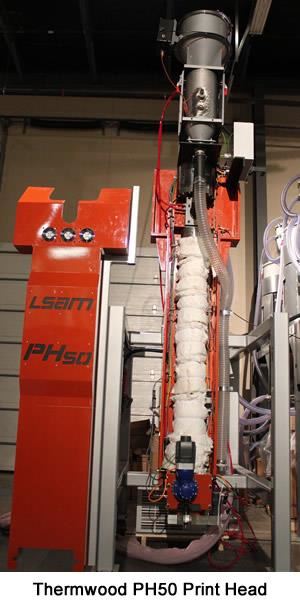
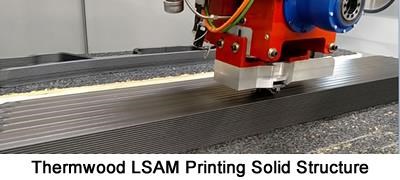
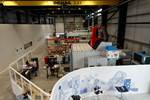







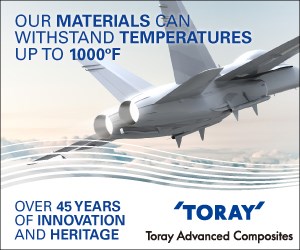
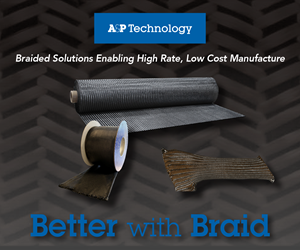

.jpg;maxWidth=300;quality=90)

